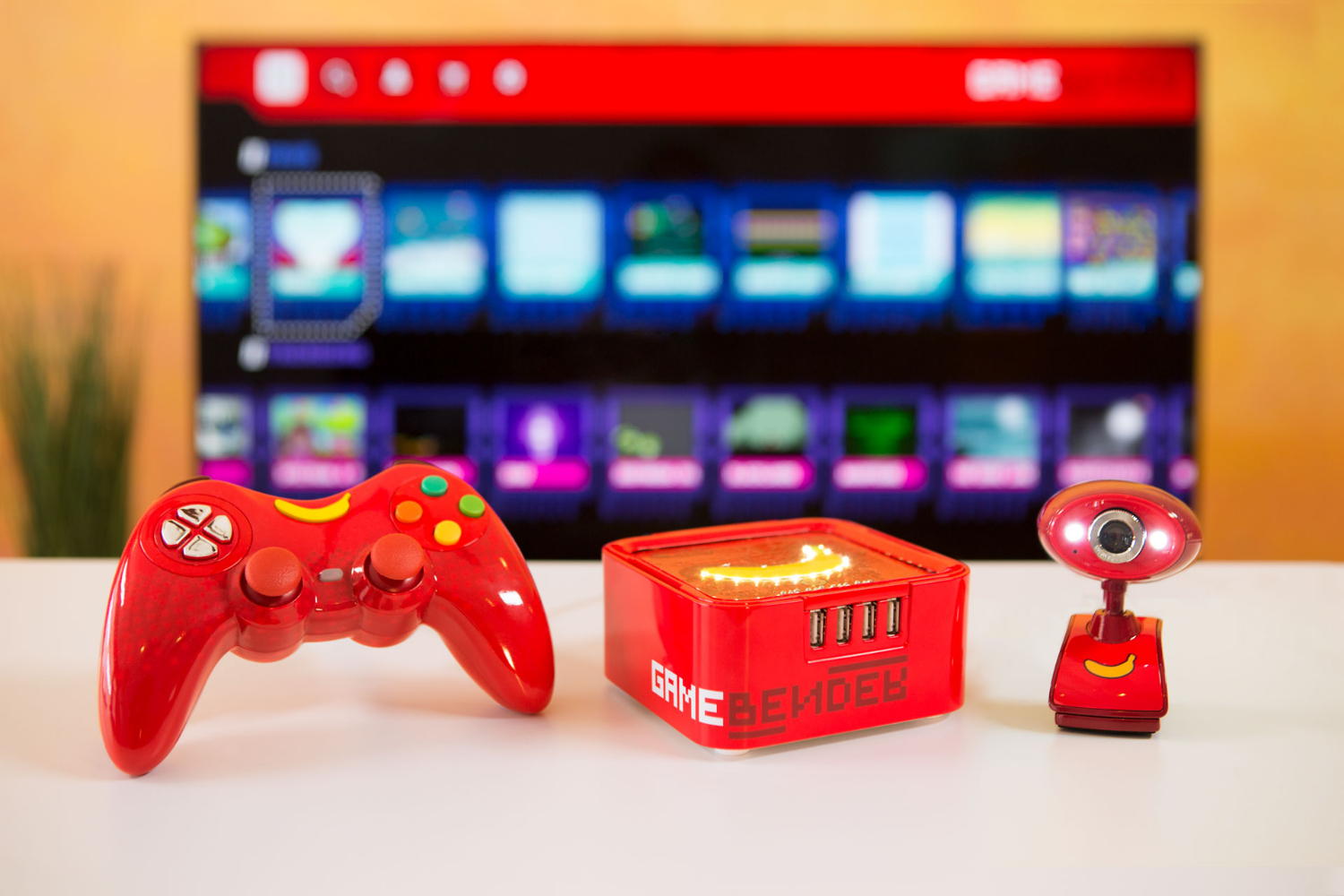GameBender Console Teaches Kids to Code With Games



It's no secret that many kids like to play video games. Many people also know that learning to code might be one of the best ways to prepare for the economy of the future. Makey Makey today announced the founding of a new company, GameBender, along with an eponymous game console meant to combine those insights by letting players explore and modify a game's code to enable new experiences based on their programming knowledge.
A bit about GameBender the startup: The company has received funding from the National Science Foundation, and it's planning to use its experience in the education market to help its console thrive. "We’ve been making educational products for more than a decade. From Drawdio to Makey Makey, we’ve shipped more than 1 million products,” Makey Makey and GameBender CEO Jay Silver said in a press release. "We believe everyone is an inventor."
GameBender's console is defined by three separate parts: the console itself, a controller with a dedicated button for checking out a game's code, and a camera that can be used to bridge the gap between the real world and the game world. Everything is defined by a bright red color scheme (which is unfortunately reminiscent of a certain fast food restaurant's iconography) and a banana logo that's supposed to convey the console's playfulness.
The console will also be sold with 3D glasses to let players make "any game to be 3D (using straightforward 2-depth anaglyph 3D technology) and see their creations in a new way." Combining the 3D glasses with the GameBender camera will also expose kids to augmented reality, and that exposure could prove useful as the technology continues to become more popular both as an entertainment medium and tool in the workforce.
GameBender partnered with Scratch to provide its console's software. That platform lets people share "projects" written with a basic programming language--not to be confused with BASIC--of the same name. GameBender said that Scratch has 40 million users who have shared "more than one million coded projects like games, apps and DIY TV." It's not clear if GameBender users will have access to all of the projects or a subset of them.
Because the GameBender console is supposed to be an educational tool, it will come with 50 flash cards meant to teach players basic coding principles. The company dubbed these cards "glitches" and said people "can also play glitch card games by passing out cards and taking turns applying glitches against or with [their] friends." The ability to combine GameBender's play-to-learn-coding principles without the console itself could prove useful.
GameBender opened pre-orders for its eponymous console on its website. Pre-orders cost a discounted $289; the company expects that price to rise to $399 for the official launch. That brings it in line with other game consoles, but that's hardly a fair comparison. Traditional consoles play host to big budget games and usually offer numerous entertainment apps besides. GameBender's console is supposed to be a learning tool first and console second.
Get Tom's Hardware's best news and in-depth reviews, straight to your inbox.
The company will also sell what it called the Social Coding Immersion Edition of the console. That variant will include an extra controller, 50 more glitch cards, three more pairs of 3D glasses, a code class curriculum, and a wireless keyboard and mouse featuring the console's branding. It will cost $100 more than the base version of the console, bringing the total price up to $399 during the pre-order period and $499 after the official launch.
GameBender said it estimates that its console will start to ship in the fourth quarter of 2019. The company didn't say when the GameBender console will officially launch, and it noted that the $399 retail launch is just an estimate.

Nathaniel Mott is a freelance news and features writer for Tom's Hardware US, covering breaking news, security, and the silliest aspects of the tech industry.